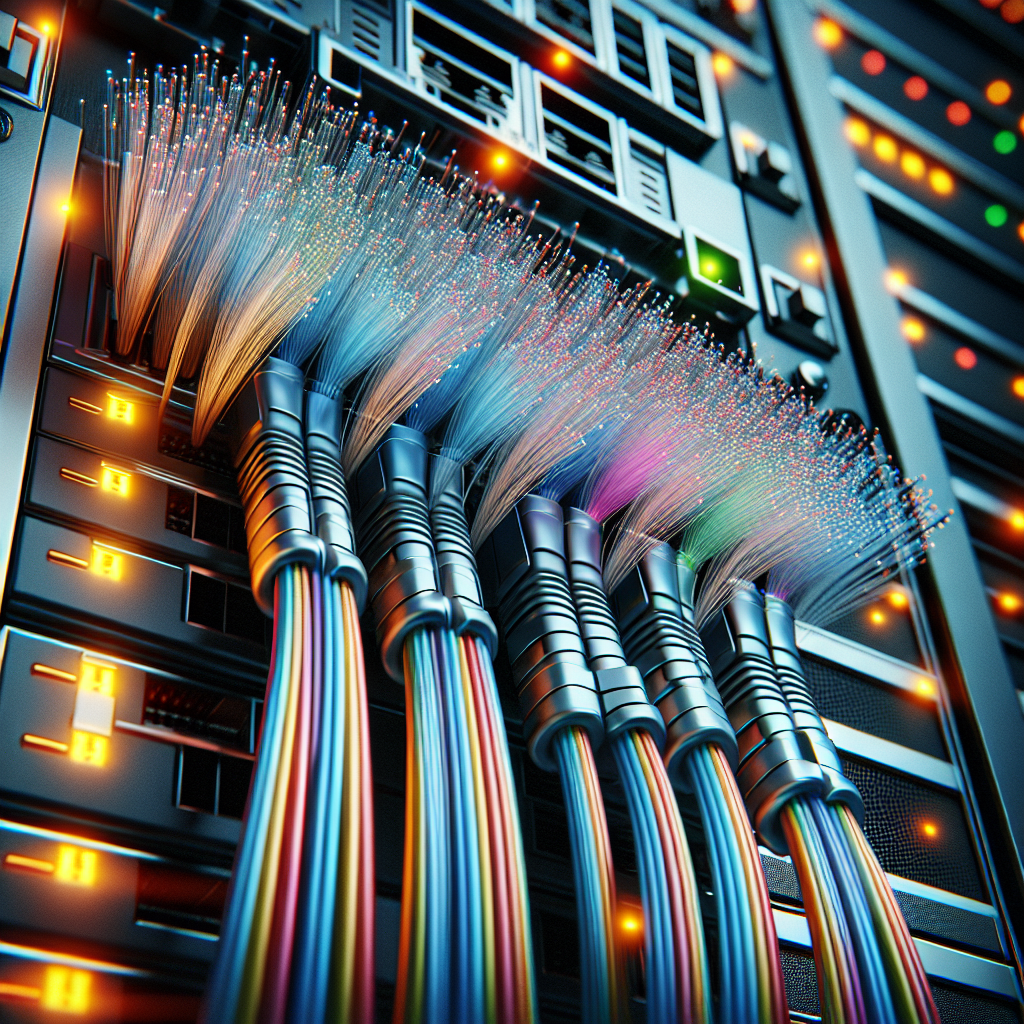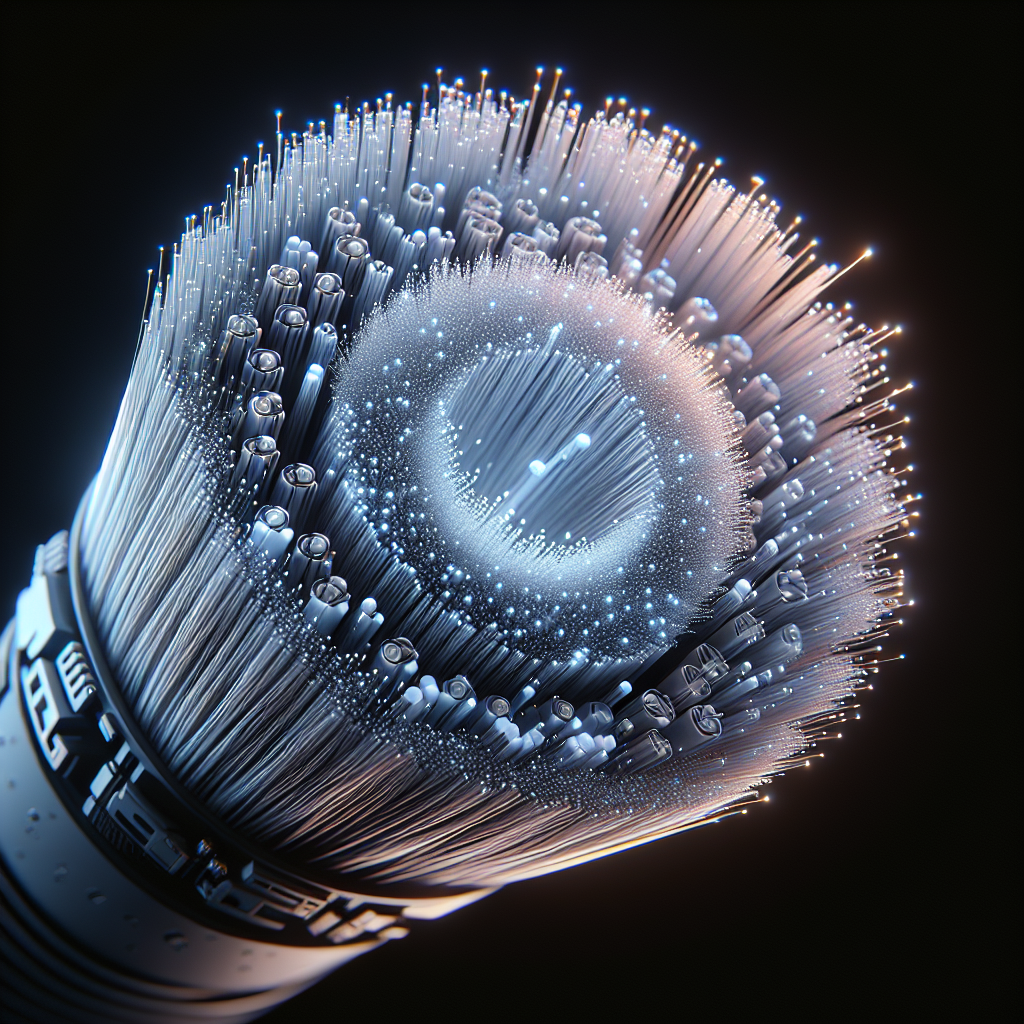Fibre optic cables have revolutionized the way we transmit data across vast distances. Unlike traditional copper wires that rely on electrical signals, fibre optic cables use *light* to transmit information, offering unparalleled speed and efficiency. These cables are made up of thin strands of glass or plastic, known as optical fibers, which are capable of carrying light signals over long distances with minimal loss of quality.
Understanding how data is sent through these cables begins with the concept of light signals. When data is transmitted through a fibre optic cable, it is converted into light pulses using a laser or LED. These light pulses travel through the core of the optical fiber, reflecting off the walls of the core due to a phenomenon known as total internal reflection. This ensures that the light signals remain within the core, even as they travel through bends and curves in the cable.
Given the importance of this technology in modern communications, it is essential to have a reliable and efficient infrastructure for fibre optic installations. This is where we come in. At Rapid Voice Data Solutions, we provide top-notch infrastructure wiring and equipment installation services to ensure your business or residence gets the best possible setup. Visit our website to learn more and get started today! Click here.
How Fibre Optic Cables Transmit Data
Fibre optic cables transmit data using light signals, a method that is both fast and highly efficient. The process begins with the conversion of electronic data into light signals. This is achieved using a device called a transmitter, which is typically a laser or an LED. The transmitter encodes the data into a series of light pulses, each representing a binary ‘1’ or ‘0’. These light pulses are then sent down the optical fiber.
The core of the fibre optic cable, made of glass or plastic, is designed to guide the light signals with minimal loss. This is possible due to a principle known as total internal reflection. As the light pulses travel through the core, they are reflected off the walls of the core, ensuring that the light remains contained within the fiber. This allows the light to travel long distances without significant loss of signal strength.
At the receiving end, another device known as a receiver captures the light signals. The receiver decodes these light pulses back into electronic data, which can then be processed by computers and other devices. This entire process happens at incredibly high speeds, allowing fibre optic cables to support bandwidths far greater than traditional copper cables. This makes them ideal for applications requiring fast and reliable data transmission, such as internet services, telecommunications, and high-definition video streaming.
Types of Light Signals Used

Fibre optic cables utilize different types of light signals to transmit data, primarily categorized by their wavelength. The two main types of light signals used are **infrared light** and **visible light**. Each type has its own unique properties that make it suitable for different applications.
Infrared Light: Infrared light, which has a longer wavelength than visible light, is the most commonly used in fibre optic communications. Infrared light is preferred because it experiences less attenuation and can travel longer distances without signal loss. The two primary wavelengths used in infrared communication are 850 nm and 1550 nm. The 1550 nm wavelength is particularly advantageous because it has the lowest attenuation, making it ideal for long-haul communications.
Visible Light: Although less common in commercial applications, visible light can also be used for data transmission in fibre optics. Its shorter wavelength means it is more suitable for short-distance communication applications. Visible light is mainly used in specialty applications like medical imaging and certain types of sensors.
Choosing the appropriate type of light signal for a fibre optic system depends on various factors, including the required transmission distance, bandwidth needs, and the specific application. By understanding these factors, engineers can optimize fibre optic systems for maximum efficiency and performance.
Data Encoding in Fibre Optics

Data encoding in fibre optics is a critical process that converts digital information into light signals that can traverse through fibre optic cables. The most common methods of data encoding in fibre optics include **On-Off Keying (OOK)**, **Phase-Shift Keying (PSK)**, and **Wavelength-Division Multiplexing (WDM)**.
On-Off Keying (OOK): OOK is the simplest form of encoding, where the presence of light represents a binary ‘1’ and the absence of light represents a binary ‘0’. This method is easy to implement and is widely used in low-speed applications. However, it is less efficient for high-speed data transmission due to its limited bandwidth.
Phase-Shift Keying (PSK): In PSK, data is encoded by varying the phase of the light signal. This method can support higher data rates compared to OOK because it uses changes in the phase of the light wave to represent data. There are different versions of PSK, such as Binary PSK (BPSK) and Quadrature PSK (QPSK), which offer varying levels of efficiency and complexity.
Wavelength-Division Multiplexing (WDM): WDM is a sophisticated technique that allows multiple data streams to be transmitted simultaneously over a single fibre by using different wavelengths of light. This method significantly increases the capacity of fibre optic systems and is widely used in high-capacity networks like data centers and long-haul telecommunications.
By employing these advanced data encoding techniques, fibre optic systems can achieve high-speed, reliable data transmission, meeting the demands of modern communication networks.
Advantages of Fibre Optic Data Transmission

Fibre optic data transmission offers numerous advantages over traditional copper wire and wireless systems, making it the preferred choice for modern communication networks. Here are some of the key benefits:
- High Bandwidth: Fibre optic cables provide significantly higher bandwidth compared to copper cables. This allows for the transmission of large amounts of data at incredibly fast speeds, making it ideal for high-speed internet, video streaming, and cloud services.
- Long Distance Transmission: Fibre optics can transmit data over much longer distances without significant signal loss. Copper cables, on the other hand, experience considerable attenuation over long distances, requiring signal boosters.
- Immunity to Electromagnetic Interference (EMI): Fibre optic cables are immune to EMI, which can distort or disrupt data signals in copper cables. This makes fibre optics a reliable choice in environments with high electromagnetic interference, such as industrial settings.
- Security: It is much more difficult to tap into a fibre optic cable without detecting the breach, providing enhanced security for data transmission. This is crucial for sensitive information and secure communications.
- Durability and Reliability: Fibre optic cables are more durable and resistant to environmental factors like moisture and temperature fluctuations. They are also less prone to physical damage, ensuring more reliable data transmission.
- Future-Proofing: As technology evolves, the demand for higher data rates continues to grow. Fibre optic infrastructure can easily accommodate these increasing demands, making it a future-proof solution for communication networks.
These advantages make fibre optic data transmission a superior choice for various applications, including telecommunications, internet services, and enterprise networks, ensuring efficient and secure data handling.
Applications of Fibre Optic Cables

Fibre optic cables have revolutionized the way data is transmitted, thanks to their immense capacity and reliability. These qualities make them ideal for a wide range of applications across various industries. Here are some of the primary uses:
- Telecommunications: Fibre optic cables form the backbone of modern telecommunications networks. They support high-speed internet connections, enabling seamless video calls, streaming, and other data-intensive activities.
- Medical Industry: In the medical field, fibre optics are used in advanced diagnostic tools such as endoscopes. These cables provide high-resolution images and enable minimally invasive surgeries, enhancing patient care.
- Military and Aerospace: The high security and immunity to electromagnetic interference make fibre optic cables perfect for military and aerospace applications. They ensure secure and reliable communication in critical situations.
- Broadcasting: Fibre optics are used in the broadcasting industry for transmitting high-definition television signals and streaming services. They enable the delivery of clear, high-quality audio and video content.
- Networking: Enterprises rely on fibre optic networks to connect data centers and support high-speed local area networks (LANs). This ensures efficient data management and rapid access to information.
- Industrial Automation: Fibre optics are employed in industrial settings for real-time monitoring and control of machinery. Their immunity to EMI ensures accurate data transmission in environments with heavy electrical equipment.
These applications highlight the versatility and importance of fibre optic cables in today’s digital age. As technology continues to advance, fibre optics will play an increasingly vital role in enabling faster and more secure data transmission across various sectors.
Visit our website to learn more and get started today! Click here.

